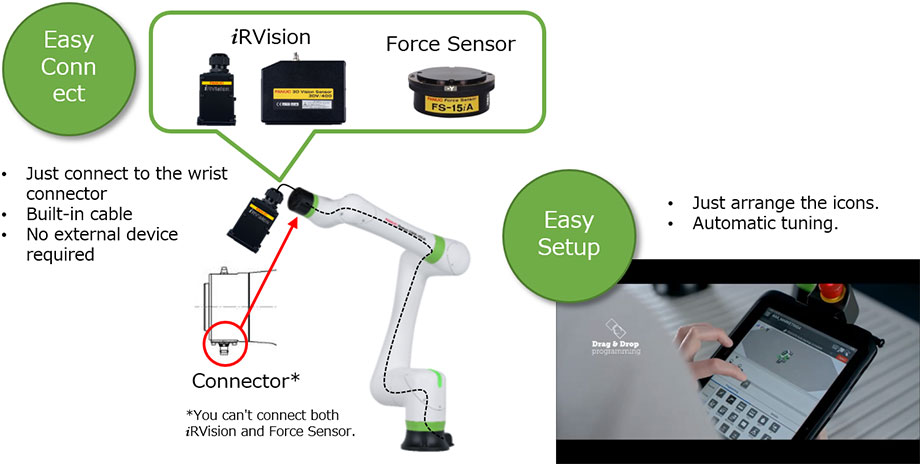The world of robotics has experienced significant advancements in recent years, with robots being increasingly used in various industries such as manufacturing, healthcare, and logistics. One crucial aspect of robotic systems is the ability to sense and respond to their environment, particularly when interacting with objects or humans. This is where robot force sensors come into play. In this article, we will delve into the world of robot force sensors, exploring their definition, types, applications, and importance in modern robotics.

What are Robot Force Sensors?
Robot force sensors are devices that measure the force or torque applied to a robot’s end-effector, such as a gripper or arm, when interacting with an object or environment. These sensors provide valuable feedback to the robot’s control system, enabling it to adjust its movements, grasp objects securely, and avoid collisions or damage. Force sensors can be categorized into various types, including:
- Strain Gauge Sensors: These sensors use strain gauges to measure the deformation of a material under load, which is proportional to the applied force.
- Piezoelectric Sensors: These sensors utilize piezoelectric materials that generate an electric charge in response to mechanical stress, allowing for force measurement.
- Capacitive Sensors: These sensors measure changes in capacitance between two electrodes, which is related to the applied force.
- Optical Sensors: These sensors use optical fibers or cameras to detect changes in the robot’s environment, such as object proximity or force application.
Applications of Robot Force Sensors
Robot force sensors have a wide range of applications across various industries, including:
- Industrial Robotics: Force sensors are used in assembly, welding, and material handling tasks to ensure precise and secure object gripping and manipulation.
- Service Robotics: Force sensors are employed in robots designed for human-robot interaction, such as robotic assistants, to ensure safe and gentle interaction with humans.
- Medical Robotics: Force sensors are used in surgical robots to provide tactile feedback and enable precise tissue manipulation.
- Aerospace Robotics: Force sensors are used in robotic systems for spacecraft assembly, maintenance, and repair to ensure secure and precise object handling.
Importance of Robot Force Sensors
Robot force sensors play a vital role in modern robotics, offering several benefits, including:
- Improved Safety: Force sensors enable robots to detect and respond to unexpected events, such as collisions or object slippage, reducing the risk of damage or injury.
- Enhanced Precision: Force sensors provide accurate force measurement, allowing robots to perform precise tasks, such as assembly or surgical procedures.
- Increased Efficiency: Force sensors enable robots to optimize their movements and grasp objects securely, reducing the time and energy required for tasks.
- Expanded Capabilities: Force sensors enable robots to interact with a wider range of objects and environments, expanding their potential applications.
Challenges and Limitations
While robot force sensors have revolutionized the field of robotics, there are still several challenges and limitations to be addressed, including:
- Sensor Accuracy and Calibration: Force sensors require precise calibration and can be affected by factors such as temperature, humidity, and vibration.
- Sensor Integration: Integrating force sensors into robotic systems can be complex, requiring careful consideration of sensor placement, signal processing, and control algorithms.
- Cost and Complexity: High-precision force sensors can be expensive and add complexity to robotic systems, making them less accessible to some applications.
Future Developments and Trends
The field of robot force sensors is rapidly evolving, with several emerging trends and developments, including:
- Advanced Sensor Technologies: New sensor technologies, such as nanotechnology-based sensors, are being developed to provide higher precision and sensitivity.
- Machine Learning and AI: Machine learning and artificial intelligence (AI) are being increasingly used to improve sensor calibration, data processing, and control algorithms.
- Soft Robotics: Soft robotics, which focuses on developing robots with flexible and compliant bodies, is driving the need for new types of force sensors that can measure forces in non-rigid environments.
FAQs
- Q: What is the primary function of a robot force sensor?
A: The primary function of a robot force sensor is to measure the force or torque applied to a robot’s end-effector when interacting with an object or environment. - Q: What types of force sensors are commonly used in robotics?
A: Common types of force sensors used in robotics include strain gauge sensors, piezoelectric sensors, capacitive sensors, and optical sensors. - Q: What are the benefits of using force sensors in robotics?
A: The benefits of using force sensors in robotics include improved safety, enhanced precision, increased efficiency, and expanded capabilities. - Q: What are the challenges and limitations of using force sensors in robotics?
A: Challenges and limitations of using force sensors in robotics include sensor accuracy and calibration, sensor integration, and cost and complexity.
Conclusion
Robot force sensors have revolutionized the field of robotics, enabling robots to interact with their environment in a more precise, efficient, and safe manner. With a wide range of applications across various industries, force sensors are a crucial component of modern robotics. As the field continues to evolve, we can expect to see advancements in sensor technologies, machine learning, and soft robotics, leading to even more sophisticated and capable robotic systems. By understanding the principles, applications, and limitations of robot force sensors, we can unlock their full potential and create a new generation of robots that can interact with and shape their environment in meaningful ways.
Closure
Thus, we hope this article has provided valuable insights into Introduction to Robot Force Sensors. We hope you find this article informative and beneficial. See you in our next article!
